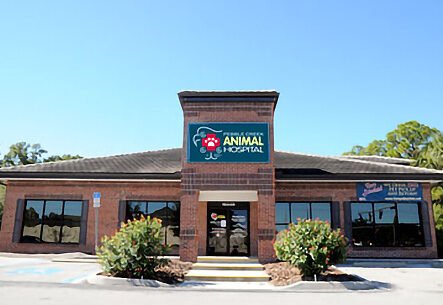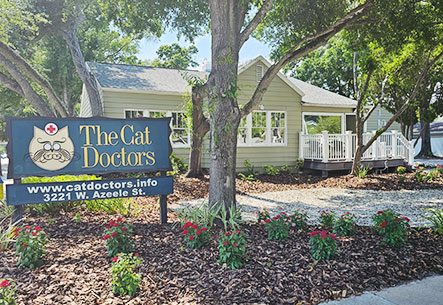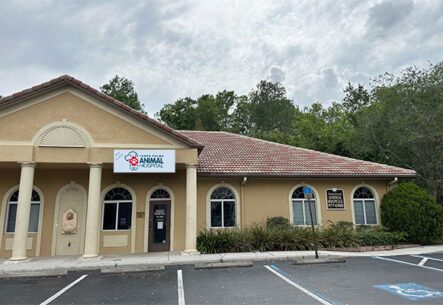Budgies
What to expect from your Budgie
Budgerigars (commonly referred to as “parakeets” or “budgies”) are quiet, intelligent, nondestructive birds that are easy to care for. They are the most popular and numerous of companion birds because of their relatively gentle, gregarious and entertaining personalities. They do not tend to bond with an individual person and frequently interact with all family members. Budgerigars are capable of developing a large vocabulary (perhaps 200-300 words), but some effort must be made to accomplish this, and their voice is not as clear as other pet bird species. Some individuals are also good at whistling.
Vital statistics
- Total length: 7 inches (18 cm)
- Body weight: 30 grams
- Age of sexual maturity: 4 months
- Maximum life span: 18 years
Is your Budgie a male or a female?
Generally, in the normal green budgie, the cere (plump tissue above the beak) is blue in the male and pinkish brown in the female. This gender differentiation is not 100% accurate, nor does it apply to color mutations. Hormonal changes may affect the cere color. The pair bond between budgies lasts until one of the partners dies.
What should Budgies eat?
The all-seed diet traditionally fed to budgies is deficient in a wide variety of nutrients and results in malnutrition, which may be expressed as unkempt appearance, lack of energy, reproductive failures and susceptibility to disease. It is ideal for budgies to eat a food specifically formulated for parrots and prepared in a size that is appropriate to them. It may be somewhat of a challenge to convert a “seed-addict” budgie to a formulated diet, but some manufacturers offer suggestions that may help in this process. Until the conversion is complete, the bird may benefit from a trace mineral/iodine supplement.
What do Budgies do all day?
Budgies are playful and easily amused with simple toys. Because they love to chew, toys must be free of toxic metals, hooks and sharp objects or small, easily consumed components. Providing small diameter, fresh-cut branches from nontoxic, pesticide-free trees is suggested for budgerigars. Check with your veterinarian for recommendations on locally available safe trees.
Are Budgies tame?
Budgies should be obtained when they are young so that they adapt readily to new surroundings and handling procedures. Budgies are easy to tame; therefore, it is best for them to be raised by their parents in the nest and then removed at weaning for taming. Young budgies can be identified by their large black eyes, pink cere and stripes over the forehead. The more time you spend with your budgie, the tamer it will become. It should be exposed early in life to novel situations (car travel, hospital visits and multiple visitors in the household) so that it is well adjusted to these events.
How to identify your bird
One method used to permanently identify your budgie in case of loss or escape is for your avian veterinarian to inject a custom microchip under the skin. Although individually numbered leg bands or rings may be applied, this method is unreliable and may result in potential damage to the bird.
Why the wings should be clipped
Budgerigars that are allowed unrestricted freedom in the home can encounter numerous physical dangers or toxins; therefore, wing clipping is recommended. The goal of clipping the wings is not to make the bird incapable of flight, but to prevent it from developing rapid and sustained flight and to prevent escape. Additional trimming may be required 8-12 weeks after the start of a molt cycle.
How to keep your Budgie healthy, happy and safe!
- Give lots of attention.
- Feed a fresh, high quality, toxin-free formulated diet with daily supplementation of small amounts of chopped vegetables and fruit according to manufacturer’s recommendations.
- Grit is not necessary with modern captive bird diets.
- Provide clean, fresh uncontaminated water (try using water bottles).
- Remove and replace food and water containers twice daily to maximize activity in a healthy bird.
- Provide an occasional opportunity for a bath, shower or misting (at least weekly).
- Avoid spraying the house with insecticides.
Housing for your budgie should:
- be as large as possible.
- be clean, secure and safe and easy to service.
- be constructed of durable, nontoxic material (avoid zinc).
- contain variable-sized perches made of clean, nontoxic, pesticide-free tree branches.
- have food and water containers placed at opposite ends of the enclosure.
- avoid having perches located directly over food containers.
- offer occasional opportunity for protected outdoor exposure to fresh air, sunlight (not through glass) and exercise.
Budgies are very curious and will investigate anything new in their environment. That is why it is important to prevent their access to:
- ceiling fans
- hot cooking oil
- overheated nonstick-coated cookware
- leg chains
- sandpaper-covered perches
- tobacco and cigarette smoke
- chocolate, avocado, salt, alcohol
- toxic houseplants
- pesticides
- toxic fumes
- easily dismantled toys
- dogs, cats and young children
- cedar, redwood and pressure-treated wood shavings
- sources of lead or zinc
- plug-in air fresheners
- heavily-scented candles
What your veterinarian looks for in a healthy Budgie:
- Dry, open nares
- Clear, bright eyes (no discharge)
- Smooth beak
- Alert, erect posture
- Body free of lumps and bumps
- Smooth, bright feathers without color breaks, transparency or ragged edges
- Even, reptilian pattern on the feet, and nails of appropriate length
Most Common Disorders of Budgerigars
- Tumors (fat, testes, ovary, liver, kidney)
- Polyomavirus carriers
- Overgrowth of beak and nails
- Egg-binding and other reproductive disorders
- Foot problems
- Obesity
- Feather disorders
- Leg paralysis
- Scaly face mites
- Chlamydiosis
- Internal parasites
- Bacterial or viral infections
The most common disease conditions in budgerigars are often the result of improper feeding. Visiting your avian veterinarian for routine health checks will help prevent many of the above diseases and support you in having a long, satisfying relationship with your budgerigar.
Background information
Budgerigars (“budgies”) are small, colorful birds that are found in large numbers in the desert interiors of Australia. Because free-ranging birds are accustomed to going days without water, it is not appropriate in captivity to use drinking water as a vehicle for administering vitamins or medications. The normal free-ranging budgie is green; other colors have resulted from selective breeding, which has actually produced undesirable characteristics, such as a significant increase in body mass and unusual feathering that interferes with normal body functions. Selective breeding has also resulted in genetic predisposition to tumors and other diseases. Budgerigars are very easy to breed in captivity. Green birds are the most disease-resistant and probably have the longest life expectancy in captivity.
Courtesy of Zoological Education Network
Tampa, FL 33615 (View map)
Tampa, FL 33647 (View map)
Tampa, FL 33617 (View map)
Tampa, FL 33647 (View map)








